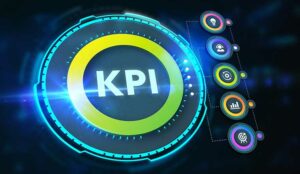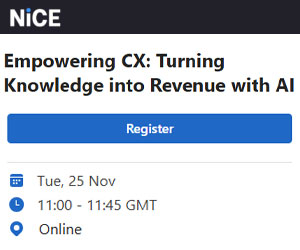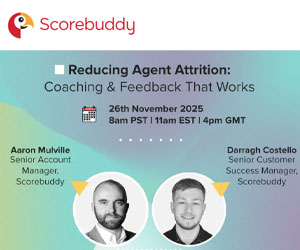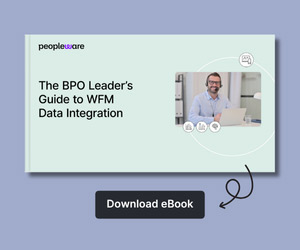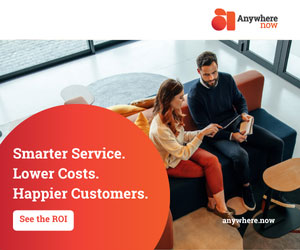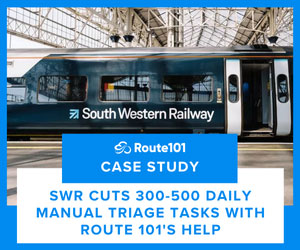Gary Bennett at Enghouse Interactive explains that for years, the success of contact centre agents has been measured on KPIs such as how many calls they take in a shift or how quickly they deal with queries on a call.
Historically, many contact centres have prioritised reducing average call handle times. In the past, the average handle time (AHT) metric was often associated with cutting costs and improving operational efficiencies.
However, it has become increasingly clear today that KPIs like AHT, for example, are not representative of the customer experience (CX) being delivered. Instead, they are merely measuring the operational efficiency of the business itself.
These kinds of KPIs belong to a different era. They rose in popularity as an approach when ‘bricks and mortar’ contact centres dominated the market.
And they became widely used at a time when the preferred interaction method for customers with an issue to resolve, was to phone the company during working hours from a fixed landline. Equally they prize operational efficiency over the end experience that the customer receives.
In an age where the key determinant of business success is the quality of service that is delivered to the customer that is not a viable option.
Yet many businesses do still adhere to them: which is likely to be hindering the level of service provided because it is causing agents to focus on the wrong metrics, which has little or nothing to do with delivering the optimum customer experience.
Moving to a New Model
While there is some adherence to the old AHT paradigm, in recent years we are seeing new signs of evolution in the way in which contact centre success is measured and defined.
Many businesses have moved to high level metrics like Net Promoter Score that consider questions like:
- How did we do within this interaction?
- Was this intervention helpful?
- Did the goods arrive on time?
Net Promoter Score moves beyond a simple measurement of customer satisfaction with a solution or service to evaluate customer loyalty to a specific brand or company.
Another metric which tracks the customer experience is the customer satisfaction (CSAT) score. The score is usually calculated via an automated survey that asks customers to rate a specific experience, such as product purchase or a service call.
Customers are frequently asked to rate their level of satisfaction on a scale of “very satisfied” to “not satisfied at all.” This metric helps gather up-to-date feedback since it can be calculated fast, usually within hours or less, following a customer’s use of a product or service.
Underpinning these customer-focused metrics for businesses is the concept of driving continuous improvement to the operational process through quality and performance measures like Six Sigma and Continuous Improvement.
Measuring the Success of Interactions
Another metric which is increasingly gaining traction within contact centres is first contact resolution (FCR).
This measures how effective the business has been in properly addressing the customer’s need the first time they contact, thereby eliminating the requirement for the customer to follow up with a second interaction.
FCR drives satisfaction because the customer has had their problem, not just their call, email, or social media post dealt with quickly.
Companies also benefit from reduced operating costs by cutting the numbers of customers that need to call them back, at the same time increasing cross-sell and up-sell opportunities.
There is also a positive impact on agent morale, which comes from no longer having to deal so frequently with multiple calls from increasingly frustrated customers.
Ultimately it is a better metric for customer-facing organisations to measure than AHT because it is effectively tracking customer satisfaction rather than operational efficiency.
Getting What They Want Quickly
Beyond even FCR though, in today’s always-on age, it is increasingly speed of response that holds sway. The importance of fast, accurate answers when delivering customer service cannot be overestimated.
Research from Enghouse’s own social polls shows that getting a quick response is the number one priority for customers.
Essentially how quickly the business responds to customer queries has a major impact on customer satisfaction, loyalty and the bottom line.
It can also impact the organisation’s contact centre operations. If customers don’t get their issue resolved promptly and are forced to make contact multiple times, it will increase the business’s staff workload.
It can also damage the organisation’s brand as customers will vent their frustrations on social media and online forums.
There are multiple approaches businesses can take today to try to achieve faster response times. One of the most important is to encourage customers to self-serve if they have routine enquiries.
Businesses can deflect these interactions by giving customers access to the information they need through chatbots, or AI driven knowledge bases, for example.
To further enhance the customer experience, businesses can prioritise interactions to ensure that those more time-critical are dealt with first.
Other techniques that contact centres can employ include signposting information in automated responses to save customer time; empowering agents with technology that helps them to answer queries more quickly and using tools like Teams to collaborate to resolve complex queries more quickly.
Just as with FCR, they can build metrics to analyse their success. These will enable them to spot areas for improvement, whether it is redesigning processes, adding resources, or increasing training.
With customers constantly expecting faster response times, businesses need to continually focus on improving speed without sacrificing quality. The benefits are clear: happier, more loyal customers, more efficient operations, and greater revenues.
Ultimately then, just like in the past, KPIs can still have a key role to play in measuring the performance of the business but those KPIs should never be inward looking and focused purely on measuring the organisation’s operational efficiency and effectiveness as is the case with the AHT metric.
Instead, they must be primarily focused on measuring the customer experience, tracking how quickly the customer has received the answers they need and also the level of satisfaction that the customer has.
If businesses can get all that right they will be able to hone the customer service they deliver, contribute to the overall success of the company and gain a significant edge on their rivals into the bargain.
For more information about Enghouse Interactive - visit the Enghouse Interactive Website
Call Centre Helper is not responsible for the content of these guest blog posts. The opinions expressed in this article are those of the author, and do not necessarily reflect those of Call Centre Helper.
Author: Enghouse Interactive
Published On: 1st Sep 2022
Read more about - Guest Blogs, Enghouse Interactive






 Enghouse Interactive delivers technology and expertise to help bring your customers closer to your business through its wide range of customer contact solutions.
Enghouse Interactive delivers technology and expertise to help bring your customers closer to your business through its wide range of customer contact solutions. 


